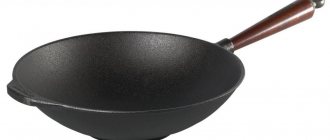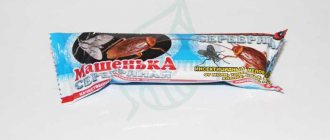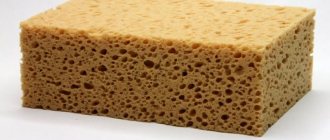After I was given an expensive mechanical watch, I seriously began to take proper care of it. Often people neglect the issue of lubrication and do not even know what it is needed for. It is necessary to protect moving elements from wear. For this, watch oil is used, which periodically lubricates miniature parts at approximately 50 points. Without such a procedure, the clock mechanism will soon become unusable.
Source ebayimg.com
How to lubricate a mechanical watch with your own hands
WATCH LUBRICATION TECHNOLOGY
To lubricate watches, they mainly use pure bone oils of various types. The advantage of bone oils is that they stick relatively well to lubricated areas.
All large parts of the watch (winding spring, winding shaft, winding wheels, striking pins, etc.) must be lubricated with thicker oil, since otherwise some of the oil will drain from the rubbing surfaces. Smaller parts (balance axis pins, pallets, spur gear teeth, etc.) are lubricated with liquid oils, since: thick oils impair the performance of these parts due to their sticking to each other. Excess oil, for example, in the winding tube (half-barrel) and in the cam clutch (barrel) during the winding of the watch will splash throughout the entire mechanism and contaminate it. When lubricating the axle axles of all wheels, you need to use such an amount of oil so that it does not extend beyond the heel of the axles.
Excess oil must be removed with a block, or the part must be cleaned and lubricated again.
It is extremely inconvenient to lubricate the anchor fork pins, and therefore requires great care and specially adapted oil dosage.
To introduce oil into the watch, it is necessary to have several oil dosages of different sizes, which can be produced by the manufacturer himself.
erased, but so that the end of the oil dosage does not have the shape of a blunt spatula. The best material for it is stainless steel or glass. The oil dosage is inserted into a faceted wooden handle.
Before lubrication, the oil dosage must be cleaned with a clean brush to remove any dust particles that may accidentally adhere to it.
Rice. 213. Oilers and oil dosages
To store oil and oil dosages, it is recommended to have an oiler (Fig. 213), which is a wooden stand with cups (made of silicate or safety glass) with lids. Such oilers protect the oil from contamination, as well as the oil dosage from damage by tools that come into contact with them.
Lubricate the stones for the pins of the balance axes of pocket and wrist watches only after all the parts are carefully installed, and the balance does not have to be removed again for certain adjustments in the mechanism. Withdraw the balance after it is
lubricated, it is impossible, since dust will stick to the oil remaining on the trunnions. Oiled stones are also susceptible to rapid contamination; From the balance pin, oil can get onto the helix pad, and then onto the helix. If the master is forced to remove the balance, it should be immediately placed on clean tissue paper and covered with a clean cap. The balance must be placed with the bridge down, and the pin must be in the hole in the bridge stone. If the balance is not quickly installed in its place, it is necessary to clear the holes of the stones from oil with a lump. You need to rotate the block in the holes of the stones until they become dry; Wipe the pins with tissue paper stretched over your fingers.
The dose of oil for secondary lubrication should be less than for the first time.
On pallets, only the impulse plane is lubricated. For good movement of the clock mechanism, lubrication of the pallets is of exceptional importance.
To lubricate small caliber wristwatches, the dose of oil should be very small. For such watches it is recommended to have a special oil dosage, very thin. A large dose of oil causes the parts to stick to each other. Do not use old thickened oil for lubrication.
Excessive lubrication of the spring is harmful, since oil leaking through the slots of the drum cover will contaminate the mechanism. For the same reason, you cannot lubricate the spring through the side cutout in the drum cover. Lubricating the spring should begin with the end of the drum closest to the shaft, and then the rest.
The drum shaft journals must be lubricated before being installed in the drum. The parts under the dial are oiled before installing the dial.
The best quality oil can be stored in the mechanism for a maximum of three years, since the oil gradually changes its properties and, instead of being useful, causes harm to the mechanism, turning into a sticky mass or dirt. This deteriorates the operation of the mechanism and, if it is not cleaned in time, the working part of the axles wears out greatly, mainly at the intermediate and central wheel hub, where the spring pressure is especially high.
Oil is retained well in watch bearings (footers, stones) that have a spherical oiler. The higher the quality of the journal surface treatment, the slower the lubricant oxidation process. The oil should fill the stone oiler from 0.5 yes
0.7 of its volume. Filling the oiler too much leads to oil spreading and contamination of the mechanism. Through balance stones and forks are lubricated with even smaller doses. In these cases, the stone oiler is filled only to 0.25 + 0.35 volumes. Excess oil, which can result from insufficiently accurate and precise dosage, must be removed with tissue paper.
Large clocks (wall clocks, alarm clocks, etc.) are lubricated in the same way as wrist watches.
In alarm clocks, the working places of the armature pins and both horns of the fork in the place where the impulse pin passes must be lubricated.
For wall clocks, be sure to lubricate the hammer lifting pins and lifting lever.
Screwdriver type oil dispensers have the disadvantage that for each lubrication point you need to drop the dosage into the oil reservoir. Recently, automatic dosages with their own reservoir have been widely used (Fig. 214), the appearance of which resembles a fountain pen. The upper part of such an oil dosage, made of plastic, is an oil reservoir. The reservoir ends in a thin tube in which a steel needle (piston) runs; When you press a special button, the piston delivers a certain dose of oil.
Pendulum clock
Tick tock, Tick tock - this is the sound we remember when we think about a watch. Although the vast majority of modern watches hardly make any sound. Not long ago, almost every watch made a distinctive clock sound because it was entirely mechanical and not electronic. Previously, in order for the watch to work, it was necessary to turn the key, wind the spring, and after listening you could hear how the gears worked. So let's look at how an old-fashioned pendulum clock actually works.
What is a pendulum?
A pendulum is a rod that hangs vertically and swings from side to side under the influence of gravity. As the Italian scientist Galileo Galilei (1564-1642) discovered, a complete swing of a pendulum takes the same amount of time. In theory, the only things that affect a pendulum's oscillation are its length and gravity. For relatively small swings, the time (T) it takes for the pendulum to make one complete swing (known as the period) is calculated from the following equation:
Where, l is the length of the pendulum, g is a measure of gravity (gravitational acceleration). From this equation you can see that you need to quadruple the length of the pendulum in order to double the swing time.
How does a pendulum work?
A pendulum works by converting kinetic energy into potential energy and vice versa. When the pendulum is in its extreme position, it has maximum accumulated energy (potential energy). At the lowest point, as close as possible to the ground, potential energy turns into kinetic energy and has its maximum value at this point. Thus, the pendulum is constantly transferring potential and kinetic energy into each other, which is an example of a simple harmonic oscillation. If friction of the contacting elements and resistance of the medium (air) were absent, that is, ideal conditions were created, then the pendulum would oscillate forever. But in real conditions, taking into account the above factors, the pendulum slows down. But what is very important for timing is that even with a decrease in the amplitude of the oscillation, the time of oscillation of the pendulum does not change. Galileo immediately noted this useful function, but he never succeeded in building a pendulum clock; he only managed to present a model of a pendulum clock in 1642. Galileo passed on his works to the Danish scientist Christian Huygens. He made the first pendulum clock in 1650.
How do pendulum clocks work?
Almost all pendulum clocks are designed as follows: in the clock mechanism that you see, weight 1, with the help of a cable through roller 2, drives the wheel system. This weight provides energy for the watch. The force is transmitted through several pairs of wheels to the brake wheel 3. The rotation of the clock mechanism is slowed down as a result of the interaction of the brake wheel 3 and the anchor 4 and is regulated by the pendulum 5. The brake wheel will move further only if the pendulum brings the anchor to a position where it is released brake gear. At the same time, the other end of the anchor passes into the space between the gears and thereby limits the movement of the brake wheel 3 by half the length of the tooth. Now, when the pendulum moves in the opposite direction, the tooth will press on the anchor and transmit force through the rod to the pendulum. At the same time, the pendulum receives a small additional energy, which compensates for its existing friction losses. This game is repeated with each movement of the pendulum. Thus, the brake wheel moves in time with the oscillations of the pendulum. Through several gears it is connected to the minute gear 7. The speeds of the intermediate gears are designed so that the minute gear rotates once per hour, i.e. at the speed of the large hand connected to the minute gear. Finally, gears 8, 9 and 10 are used to make the small hand move 12 times slower than the big one. The combination of arrows 8, 9 and 10 is also called a switch mechanism.
What is oil used for?
Applying a special lubricant to the watch mechanism is necessary to prevent or reduce friction, surface wear, and also to protect the device from corrosion.
The oil used to lubricate the watch mechanism must be suitable for its purpose and spread evenly over all parts. To do this, even at the production stage it is checked for lubricity. That is, watch oil is tested in liquid friction mode. And if it has the necessary lubricity (the ability to withstand normal pressure and not burst), then only then is it used to repair mechanisms.
As a rule, oiliness directly depends on the composition. For example, bone fluids have better lubricity than mineral fluids.
What in the end...
I came to the conclusion that it is necessary to lubricate a mechanical watch, but one type of oil cannot do it. Watchmakers have more than 10 types of oils and lubricants in their arsenal for different purposes. So, in the interval of the kinematic chain from the big wheel to the drum, where the speed is not high, viscous oils are used. They create a durable film that is not afraid of high pressure. The farther from the factory spring, the less the acting force. For example, an escape wheel requires a very thin film of oil so that the mechanism can operate as freely as possible.
Question
Write in the comments what you think - is it worth bothering so much about lubrication of the watch, or is it better to give it to a master and not suffer?
Main types of domestically produced oils
To lubricate a clock mechanism or similar device, special products are used. For example, for devices that operate under normal conditions, you can use oils like MC-3, MPB-12, MChM-5 or MZP-6. If the mechanism is often located in open space and at low temperatures, then it is recommended to use MH-60 watch oil or similar types of this brand. For example, MH-45 and MH-30.
In devices intended for operation in countries with tropical climates, watch oils of the MCT and MPT types are usually used. Such products contain antiseptic additives that prevent the development of bacteria and other fungal organisms. Similar watch oils include MPT-3 and MChT-3. Among other things, such products undergo various tests even at the production stage. This helps increase moisture resistance and chemical stability.
Domestic oil for micro-assemblies
In addition, it is worth mentioning the RS-1. It is a low melting, soft watch oil with a yellow or light brown tint, intended for general use. But such a lubricant is rarely used for the entire mechanism, since it has a low tensile strength and is retained on the components only by capillary force. Nevertheless, such watch oil has some advantages over other types of similar products. For example, it is more frost-resistant and stays well in the device even at temperatures above 100 °C. That is why it is best to apply such a lubricant only to micro-assemblies, and not completely to the entire watch mechanism.
How to clean a yellow metal watch?
A 1:1 mixture of baking soda and vinegar is a fairly strong product suitable for any metals: stainless steel, silver and gold, among others. Moisten a toothbrush in the product and clean out dirt from the bracelet. No need to soak. Another working solution is a mixture of ammonia and vodka in half.
Interesting materials:
How to get mvideo bonuses? How to get bonuses in Yula? How to get money for business development? How to receive cash deposits by inheritance? How to get a deposit on 1xbet? How to obtain an electronic signature in Privatbank? How to get an electronic key for an individual entrepreneur? How to get an Egov electronic key? How to obtain an EDS without leaving your home in Uzbekistan? How to get a background for Steam?
Oils produced abroad
There are many lubricants from foreign manufacturers, but the most popular is Moebius. This is Swiss-made watch movement oil, which is distinguished by the highest quality and resistance to temperature changes. That is, in fact, it can be used in any conditions, regardless of climate and place of residence.
The main products of this manufacturer include:
- Moebius 8000 watch oils are natural products that are intended for application to the main parts of the device. In addition, it is often used to lubricate transfer mechanisms and alarm springs. The main feature of this oil is that it does not spread when applied. Simply put, such a lubricant has sufficient rigidity.
- Moebius Synt-A-Lube 9010. This is a synthetic oil with high resistance to temperature changes (from +70 °C to -29 °C) and viscosity grade. Typically, Moebius Synt-A-Lube is intended for stones, escapements, bearings and balances of medium to large devices. For example, it is used to lubricate antique wall, floor or wall clocks. It is also popular among craftsmen who repair meters and various mechanical measuring instruments.
- MOEBIUS D5 is a universal oil for minimizing friction and significant load on the watch mechanism. Intended for low-moving parts of small and medium-sized devices, as well as for lubricating pallet stones and gears.
What is watch repassage and why is it needed?
So, repassage of a mechanical watch is a labor-intensive procedure, during which the watch mechanism is completely disassembled, all parts are cleaned, if necessary, worn parts are replaced, lubricant is replaced and, finally, reassembled.
Is it really necessary to subject the watch to this procedure? Should I take them to a certified service center? After all, the pleasure is not cheap: for the most inexpensive mechanical watches, the cost of repair will be about 4 – 5 thousand rubles, and for elite ones the price will be in the tens of thousands! Well, if the watch is not expensive either in terms of value or as a memory, then it may be easier to buy a new one. Or, if you have skillful hands and an inquisitive mind, then try to cope on your own... But when we are talking about the average or, especially, the highest level, it makes sense to fork out. In fact, it wouldn’t even occur to you to change the brake pads, oil in the crankcase, etc. yourself. in your Ferrari or Rolls-Royce.
So - to a workshop, and a good one, not a cheap one! It's worth it.
How do you know when it’s time to do repassage? As a rule, manufacturers indicate the desired maintenance intervals in the watch instructions. Usually this is once every two to three years. But sometimes the need may arise earlier. Dust and moisture penetrate inside the watch (absolute tightness does not exist), the oil thickens, vibrations, shaking, and shocks are possible during operation. Signs that a watch needs to be repassed are deterioration in the accuracy of the movement, “stiffness” of the crown, and in the case of self-winding watches, a decrease in the efficiency of the latter.
Lubrication procedure
Oil application is carried out in stages:
- Lubrication of the main mechanism. Oil is supplied to the spring, then to the places where it interacts with the drum and between the wheels. For this it is recommended to use MC-3 or an analogue.
- Wheel system lubrication. To work with hand or pocket watches, MZP-6 and MChM-5 are usually used. Oil is applied to eight points of the wheel system (four axles on top and four on the bottom).
- Repair lubrication. As a rule, such devices are most often used in pocket watches in order to wind them without a key. To work with it, you can use MTs-3 or RS-1 oils. But it must be taken into account that RS-1 is not used for the entire mechanism, but only for part of it. For example, this oil can be used to lubricate the transfer lever (a small protrusion in the device). MC-3 is most suitable for gears, the winding shaft and the trunnion.
- Lubrication of the pointer mechanism and escapement system. For this procedure, MZP-6 and MBP-12 are used. This oil is used to lubricate the billet and central wheel or its upper part, as well as the descent system. It is worth remembering that MBP-12 does not need to be applied to the pins of the anchor fork, because then the clock will stop and will have to be repaired.
- Lubricating balance stones. This process uses MBP-12 oil or a similar liquid. It is important to apply lubricant before starting the assembly procedure on clean stones without dirt deposits.
And most importantly, when performing all the above operations, you should carefully monitor the amount of oil. Applying too much lubricant can damage the movement of the watch and require repair. The recommended amount of liquid in the oilers is 1/3 of the height of the device.
Cleaning and polishing watches at home
We're done with repassage, now let's move on to more accessible operations. However, they also have their own subtleties. Let's start with straps and bracelets. For cleaning, it is better to remove them from the watch. Of course, if the declared water resistance of the watch is 100 meters or more, then everything can be done assembled. If you're so lazy. The main thing here is to remember to completely screw the crown down.
Cleaning the silicone strap
to wash a white silicone bracelet . Prepare a cleaning solution: liquid antibacterial soap, a few drops of ammonia, warm water. Soak a cotton pad in the solution and wipe the strap on both sides. Rinse off with running water, wipe off, and leave until completely dry. Life hack: if the silicone is heavily soiled, it can be cleaned well with a white eraser.
Washing the rubber bracelet
It's rubber. Take a piece of laundry soap. Cut off half. Grate on a coarse grater. Pour a glass of warm water and stir. After a while you will get something like a paste. Apply it to the strap using a cotton pad. We wait half an hour. Three fairly hard sponges. Rinse with running water, wipe, wait until dry.
Another option is toothpaste. Everything is the same, except that you don’t need to rub with a sponge, but rather use a soft toothbrush. Or with a brush, also soft. Or at least a finger.
Metal strap
The most common metal for watch bracelets is stainless steel . We’ll turn to such bracelets, and we’ll tell you about the rules of working with products made from precious metals a little later.
We go over all surfaces with a soft cloth (flannel is good). Make a weak warm soapy solution. We immerse the bracelet in it for a few minutes. Then we treat it with a soft brush (or a toothbrush), cleaning out the muddy dirt between the links. We treat polished links gently! Rinse with warm running water and wipe dry with a soft cloth. If you want to renew the shine of the metal, wipe the bracelet with a napkin slightly moistened with an ammonia-based cleaner - at least a weak solution of ammonia.
How to clean a leather strap
Leather is perhaps the most solid material for a watch strap, but it is also more capricious than rubber or silicone. care more often, but if it is more difficult, it is not much. The basic method is the same as for a silicone strap (see above). You just need to remember that you should not soak the skin in a soap-ammonia-water solution: just wipe it with a cotton pad. And you need to wash off the solution not with running water, but with a damp cloth.
But you can soak it in another solution: baking soda and water, 1:1, this is recommended in case of severe contamination. You can also add vinegar. The soaking time is from 30 minutes to an hour, then remove the soda with a cotton pad and wipe the strap with a damp cloth. It’s also a good idea to apply and rub a couple of drops of glycerin – the skin will become softer.
Finally, a completely homemade method: add egg white (1 pc.) to a glass of milk, whisk, refrain from ingesting, moisten a cotton pad, treat the skin, wipe with a damp cloth, and leave to dry. Now you can finish the eggnog.
Carefully clean gold and gilded watches
Ah, gold. It is beautiful, it is truly precious! But the royal yellow metal (and gold also comes in pink and white) requires appropriate handling. Never, under any circumstances, use water when working with it! Only dry substances, namely: baby powder, or cosmetic powder, or, at worst, crushed chalk. And dry – just dry! - soft cloth. We pour a little of our powder on it and carefully polish the surface - be it a bracelet or a case. Finally, wipe with a clean cloth, also soft and dry.
Silver watch
You can also use water for silver. A good solution consists of ammonia (or table vinegar) and soda. We apply this substance to the product and leave it for half an hour to an hour, then wipe it with a damp cloth and, finally, polish it with a cloth or microfiber.











